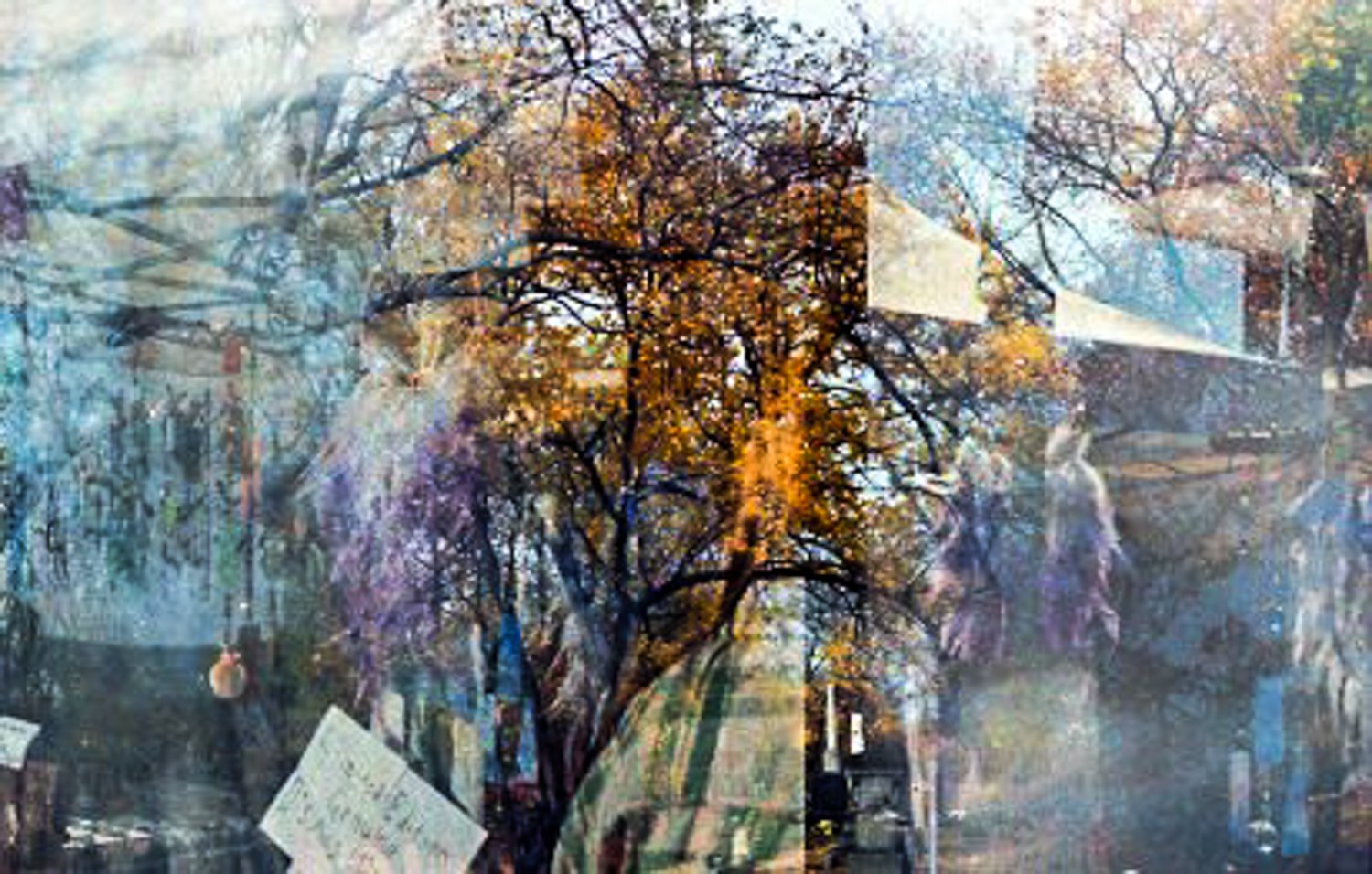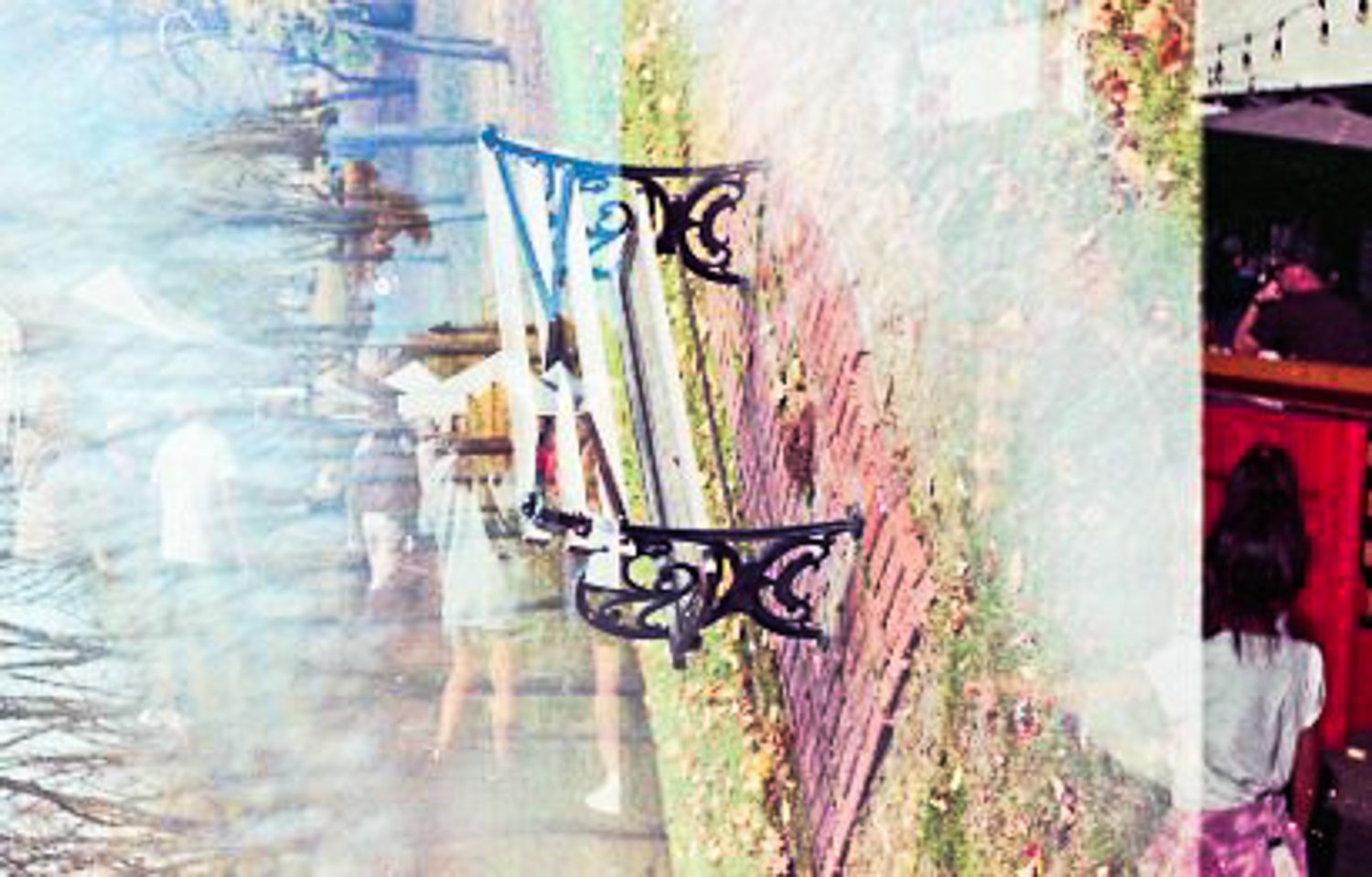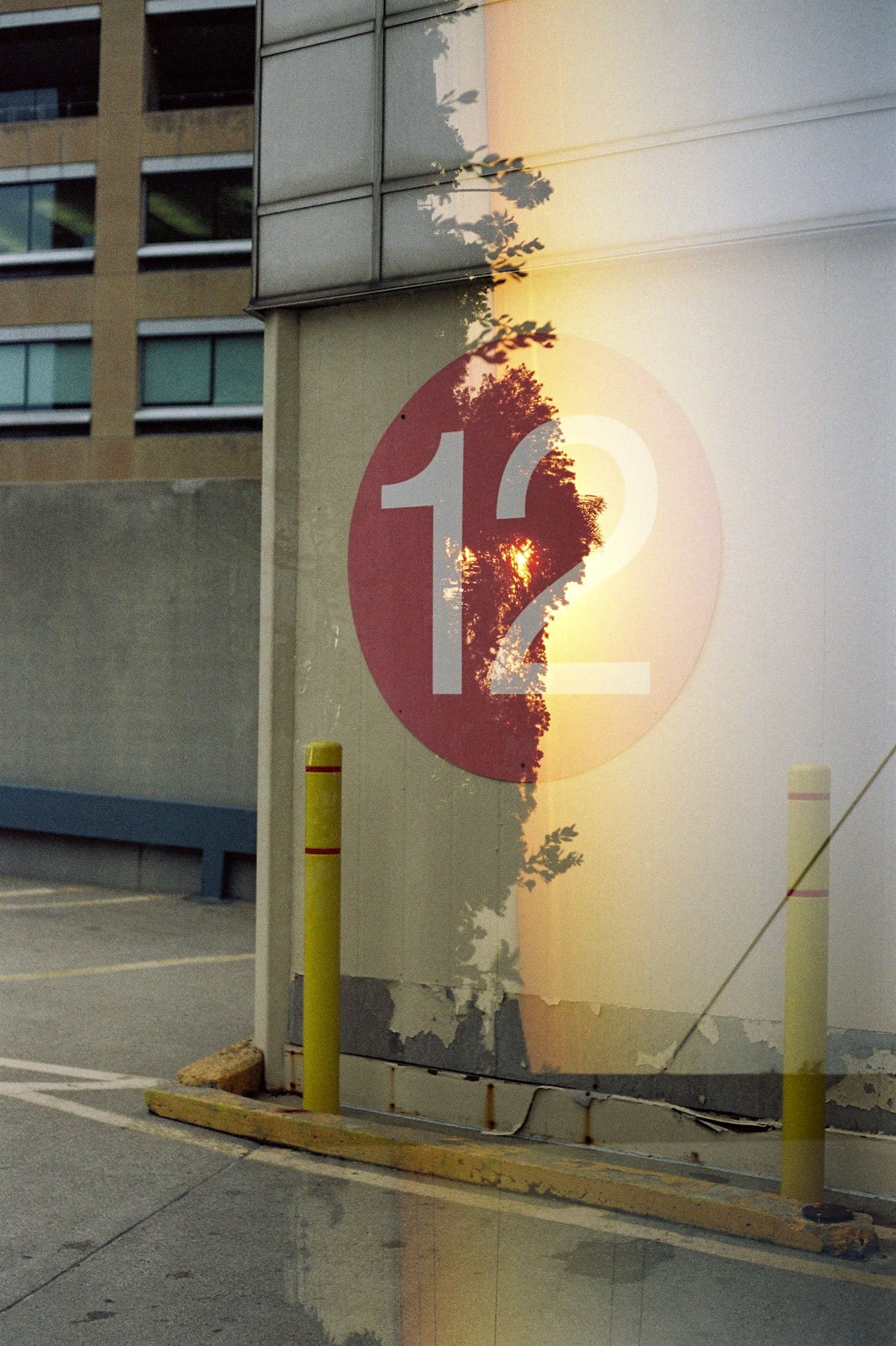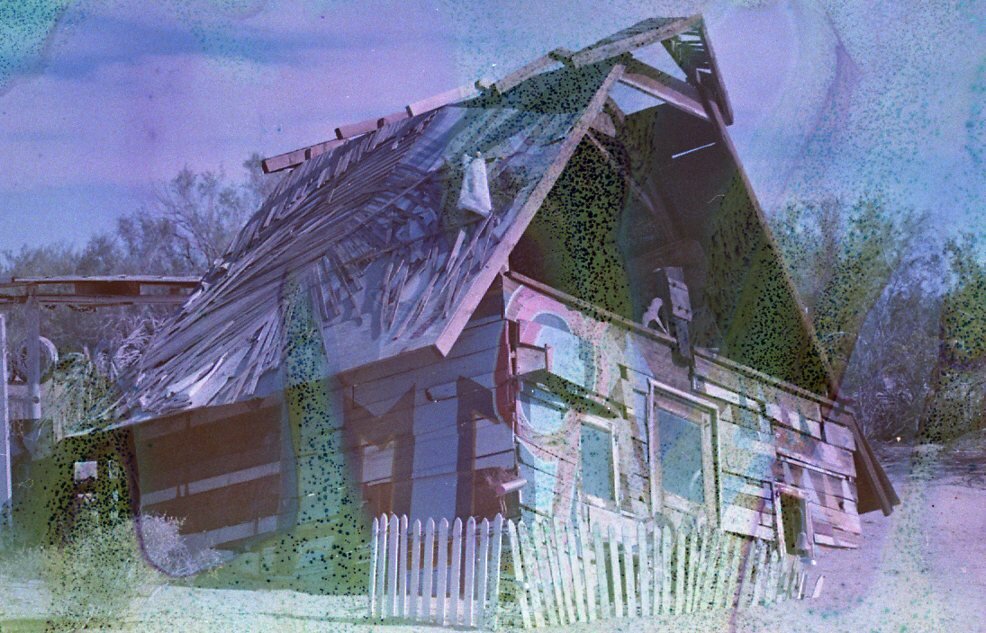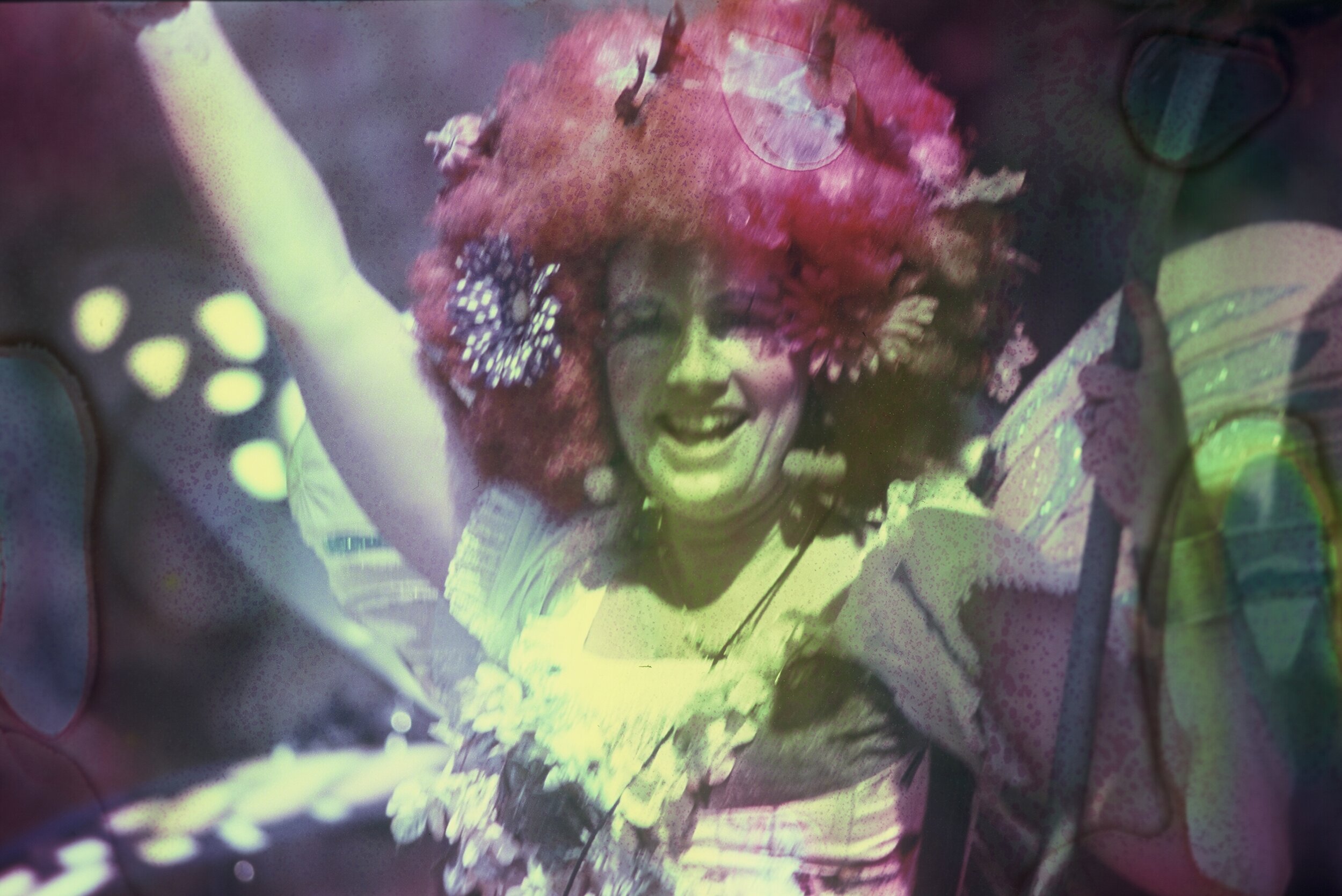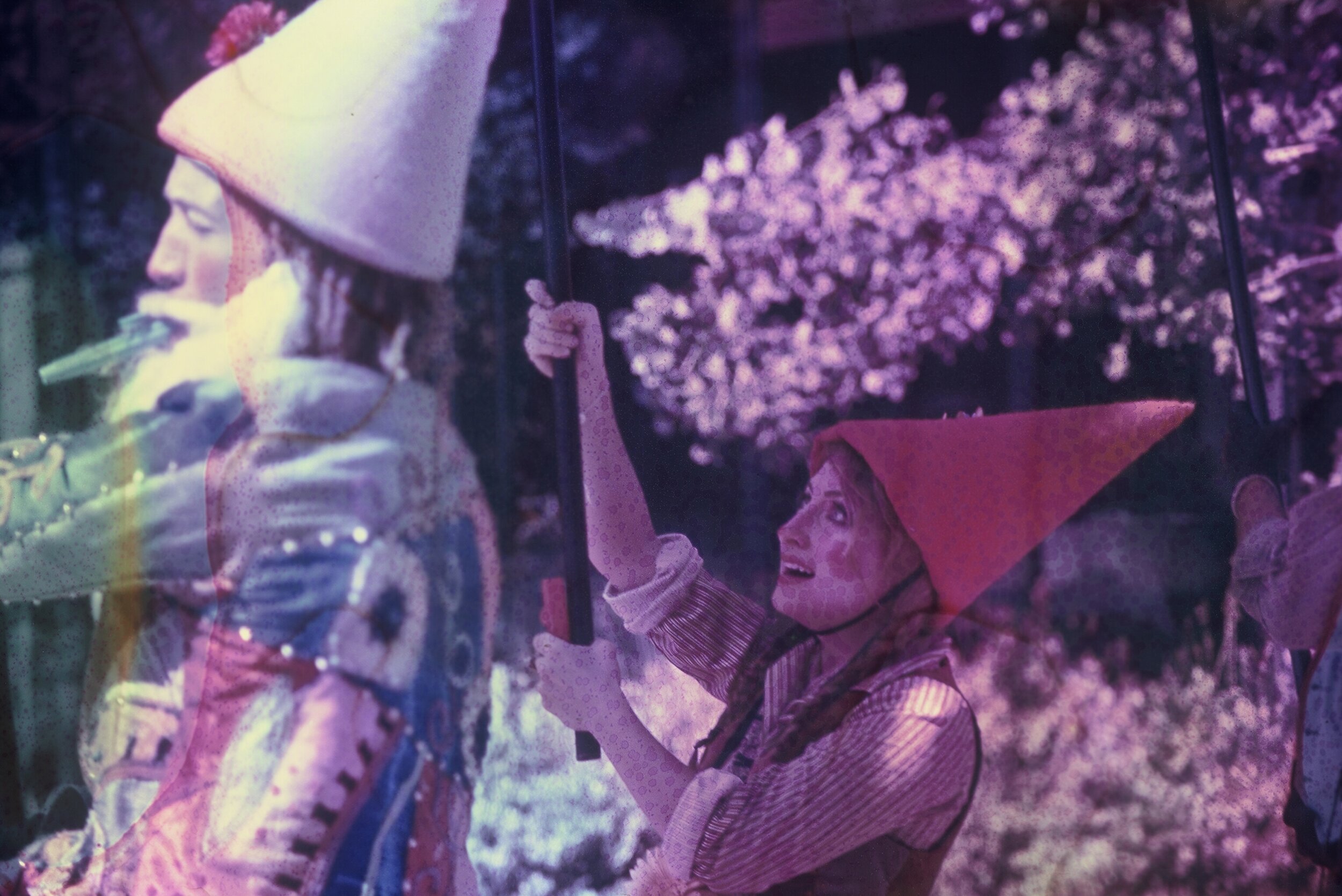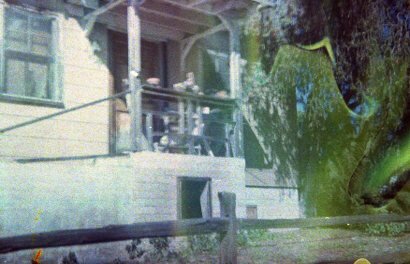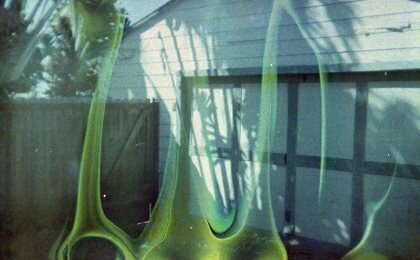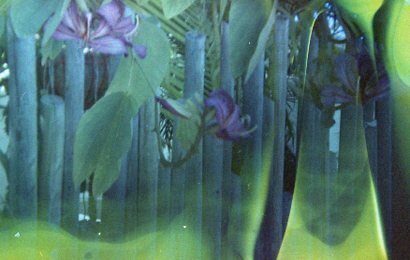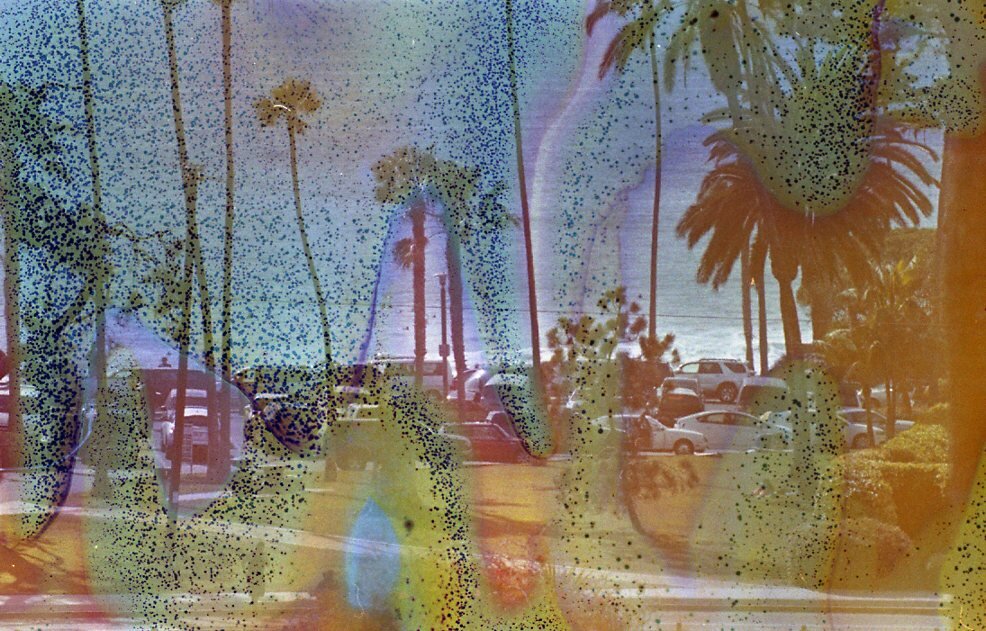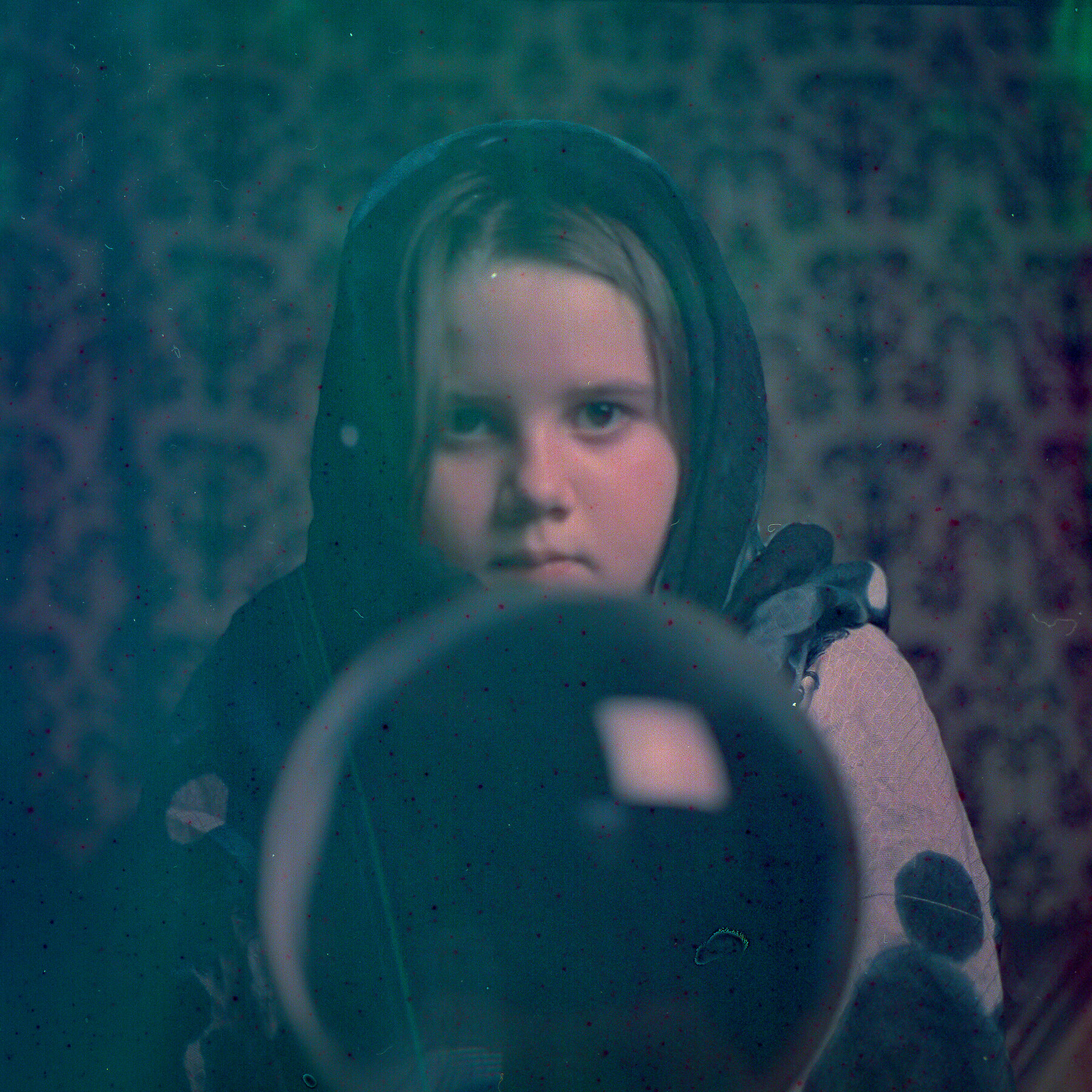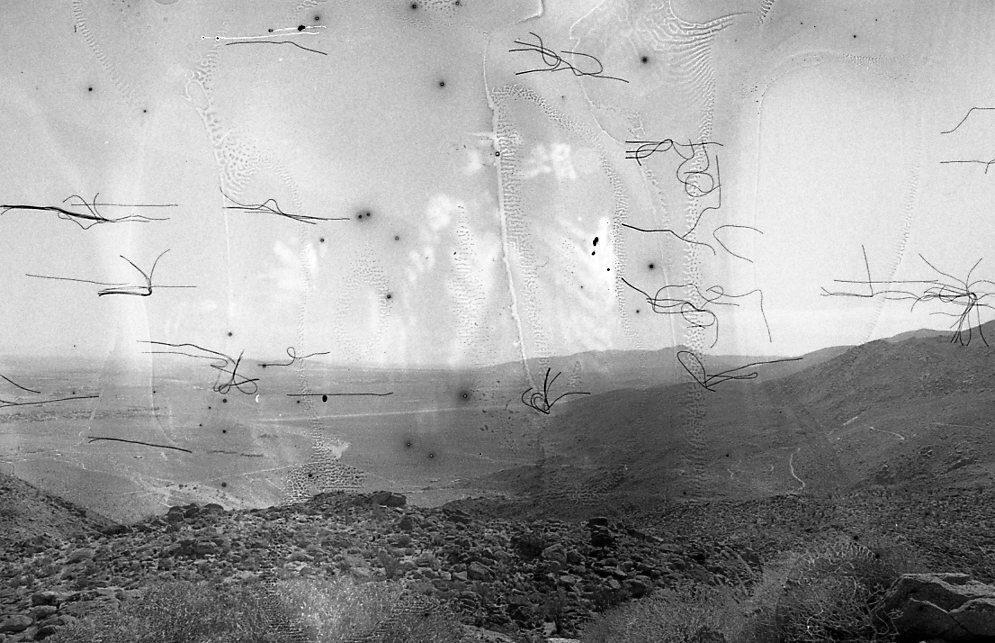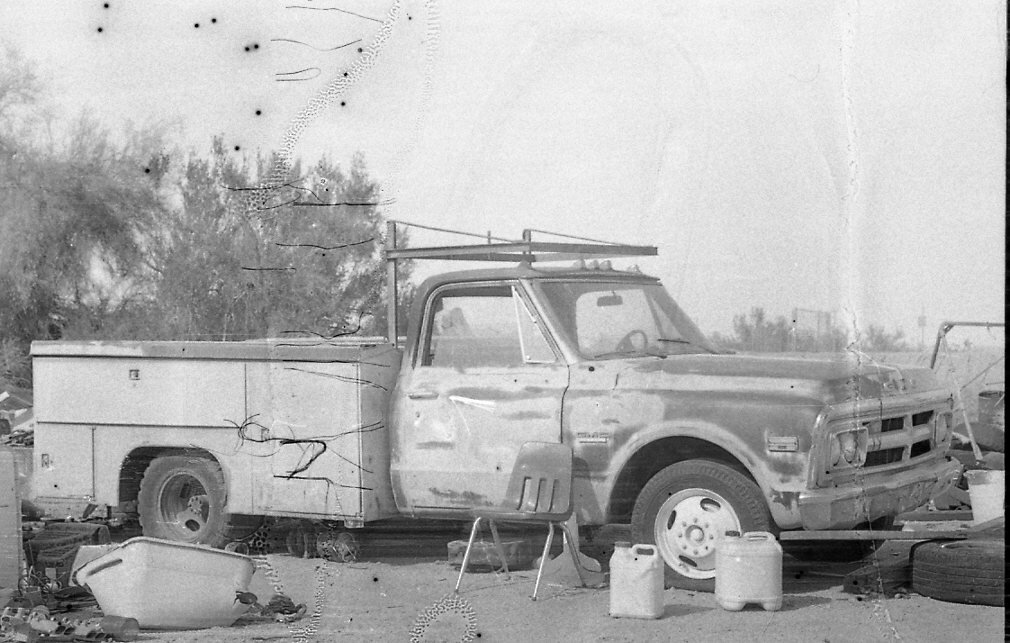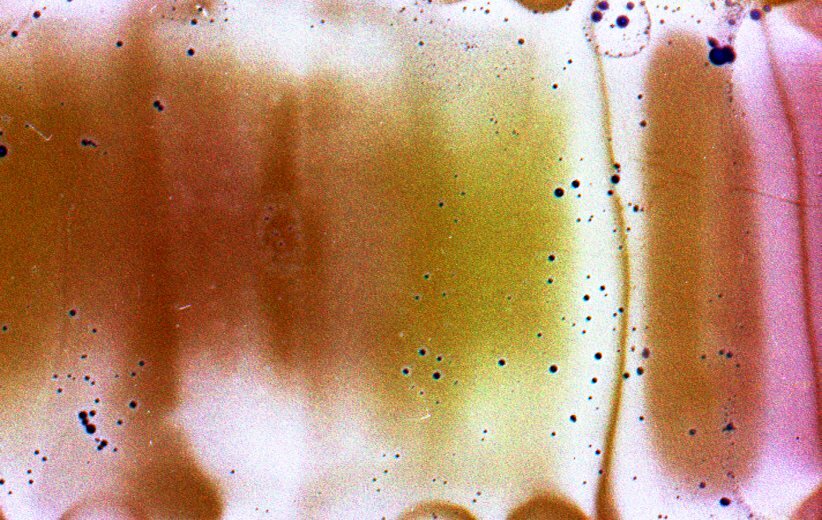Film Shooters Collective members were challenged late in 2022 to complete a film swap project. Here we present the results of one collaboration. In this type of double exposure, one photographer shoots the roll of film, rewinds, and sends to the second photographer to shoot a second set of images. The results are always surprising, often beautiful and sometimes downright amazing.
For this swap, Katie Mollon and I swapped two rolls of film. Each of us shot one roll in areas around their home towns, then swapped by mail. That gave two sets of fun results. Since Katie lives in Detroit and I live in Cardiff by the Sea near San Diego, some interesting juxtapositions resulted.
KATIE : For the first roll, I took photos on a sunny fall day at Elmwood cemetery in Detroit. It's the oldest non-denominational cemetery in Michigan, so it has a ton of variety. I brought along my Lensbaby Omni filters, and experimented with them on each frame. I imagined that this would add to the surreal quality of double exposures.
BARBARA: I shot my images for this roll at a local street fair on a sunny day. Unfortunately the images didn’t line up as well as we would have liked but we still got some interesting results.
BARBARA: I shot a second roll mostly at locations near my house, then sent it to Katie. I tried to emphasize shots that were distinctly local, with a lot of palm trees and some sunsets. I think some of the results from this roll are really spectacular.
KATIE: For the roll I got in the mail from Barbara, I loaded it in my SLR during a photo meetup in downtown Detroit. It was a rather nondescript, chilly day. I was happy to have this roll with me, because I had already photographed a lot of the subject matter several times during the pandemic. Knowing that there would be a surprise in every frame kept me excited to keep composing my shots. Overcast days are great for film swaps, because the skies won't blow out the other person's subjects.
KATIE: Like with most of my work, which is experimental, I liked some results better than others. I will continue to do film swaps, because the ones that turn out the best keep me invigorated about the process! The mysterious qualities about film are what fuels my passion.
BARBARA: Like Katie, I enjoy experimenting with photography. I think having a general idea what types of images your partner shot, but not an exact image listing, makes the project more fun. But, you’re free to plan a swap in as much detail as you want. Try it yourself with another film photographer and send us your results.



